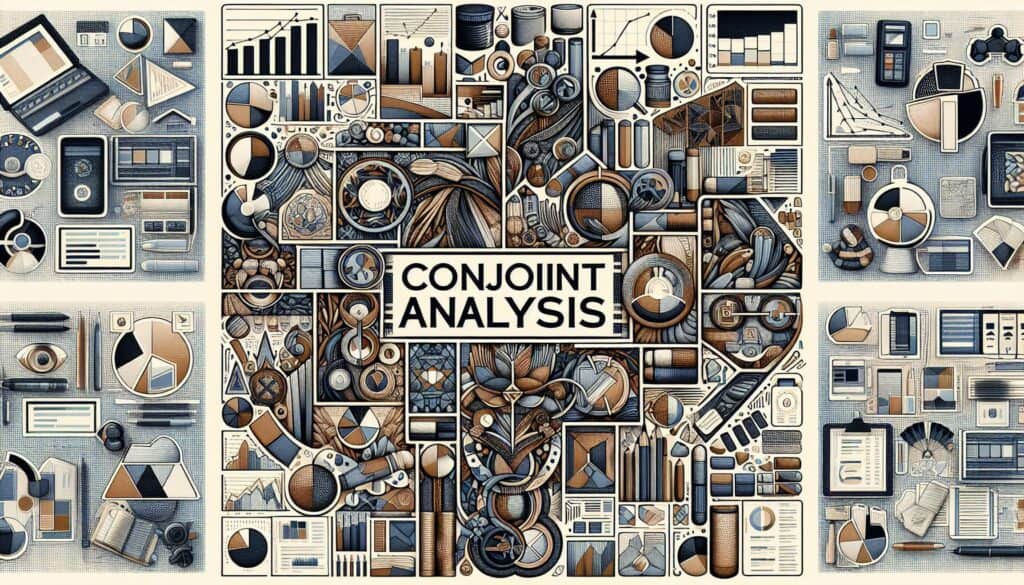A statistical market research technique used to determine how people value different attributes (features, functions, benefits) that make up an individual product or service.
- Méthodologies : Clients et marketing, Lean Sigma, Conception de Produits
Analyse conjointe

Analyse conjointe
- Méthodologie Agile, Expérience client, Pensée conceptuelle, Étude de marché, Conception de Produits, Développement de produits, Statistical Analysis, Proposition de valeur
Objectif :
Comment il est utilisé :
- Respondents are shown a series of product profiles (combinations of attributes) and asked to make choices, rankings, or ratings. Statistical analysis then reveals the perceived value of each attribute.
Avantages
- Helps understand customer preferences and trade-offs for different product features; can optimize product design and pricing; useful for market segmentation and new product development.
Inconvénients
- Can be complex to design and analyze; results depend on the selection of attributes and levels; respondents may not always behave in real markets as they do in surveys.
Catégories :
- Clients et marketing, Économie, Conception de Produits
Idéal pour :
- Understanding how customers value different attributes of a product or service to optimize design and marketing.
Conjoint Analysis finds applications in various industries, including consumer goods, automotive, healthcare, and technology, making it adaptable across different project phases, particularly in the stages of design and market feasibility studies. This methodology is often initiated by product managers or market researchers seeking to understand customer preferences before launching a new product or feature. For instance, in the automotive industry, manufacturers can assess how consumers value aspects such as fuel efficiency, safety features, and price, informing both design and marketing strategies. Participants typically include a representative sample of the target market, allowing for diverse input that can reveal unique segments within the audience. By analyzing results, companies can identify not only which attributes are most important to consumers but also the trade-offs they are willing to make, aiding in decision-making regarding product specifications and pricing structures. This process also enhances the ability to create targeted marketing messages that resonate with distinct consumer groups and informs decisions on product bundling or feature prioritization, thereby improving the likelihood of market success for new releases.
Principales étapes de cette méthodologie
- Define the product attributes and levels relevant to the study.
- Select a suitable experimental design to create product profiles.
- Develop a choice set or questionnaire including product profiles.
- Administer the choice task to the respondents.
- Collect and organize the choice data for analysis.
- Apply a statistical model, such as logistic regression, to analyze the data.
- Calculate part-worth utilities for each attribute level.
- Interpret the results to determine attribute importance and customer preferences.
- Conduct simulations to predict market behavior with proposed product configurations.
Conseils de pro
- Utilize hybrid methods by combining traditional conjoint analysis with machine learning techniques to capture non-linear preferences and complex interactions among attributes.
- Incorporate iterative testing in exploratory phases to refine attribute definitions and levels based on preliminary respondent feedback.
- Segment your sample thoughtfully to identify niche market segments that may have distinct preferences, thus uncovering more tailored insights for product differentiation.
Lire et comparer plusieurs méthodologies, nous recommandons le
> Référentiel méthodologique étendu <
ainsi que plus de 400 autres méthodologies.
Vos commentaires sur cette méthodologie ou des informations supplémentaires sont les bienvenus sur le site web de la Commission européenne. section des commentaires ci-dessous ↓ , ainsi que toute idée ou lien en rapport avec l'ingénierie.
Contexte historique
1949
1950
1950
1960
1960
1960
1960
1940
1950
1950
1958
1960
1960
1960
1960
(si la date est inconnue ou n'est pas pertinente, par exemple "mécanique des fluides", une estimation arrondie de son émergence notable est fournie)















Articles Similaires
Calculateur de METS en calories
Méta-analyse
Cartographie des messages
Diagrammes du modèle mental
Forces de poussée et de traction maximales acceptables
Planification des besoins en matériaux (MRP)